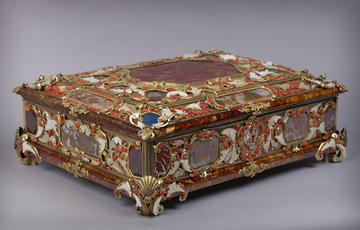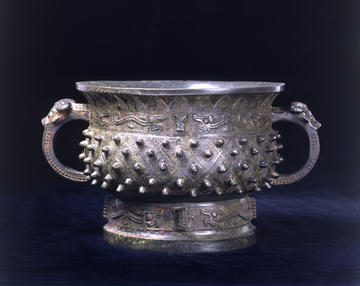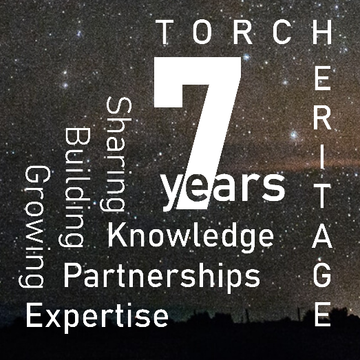Learnings from Lockdown
Hosting Remote Internships at Compton Verney Art Gallery and Park
In response to COVID-19 the Heritage Partnerships Team and the Oxford University Heritage Network (OUHN), adapted our activity to meet the unprecedented challenges faced by the arts and heritage sector. In summer 2020, we re-confirmed our commitment to building partnerships, growing expertise and sharing knowledge within and beyond the University of Oxford by setting up and funding record numbers of summer-internships though the Higher Education Innovation Fund (HEIF), in close collaboration with the Oxford University Careers Service. Much more than enabling students, and early-career researchers to gain real-life professional experience, under these exceptional circumstances, these placements exemplified our vision for ambitious and mutually beneficial partnerships between the heritage sector and academia. Reflecting on this experience, we have asked Dr Amy Orrock, Senior Curator: Content and Collections at Compton Verney Art Gallery & Park, to share her thoughts about these placements from the perspective of the host. Since 2014, when we first established this collaboration, Compton Verney has hosted seven interns from the University of Oxford.
Late May 2020 and the museum sector was in crisis. With doors closed to the public for an already unfathomable two months, galleries were eerily quiet. Corridors, cafes and shops were deserted, exhibition installations and temporary displays had been paused, loans carefully covered from the light with sheets of paper and dust cloths. Back of house the situation was equally strange. With the majority of staff furloughed, offices were empty. Those staff that remained were engaged in frantic communication online. With almost every institution in the world seeking to reforecast their exhibition schedules, the creaking plate tectonics that make up the museum and gallery sector were almost audible: shifting and aligning along new axes, as existing loan agreements were extended and plans were formed to open on an unknown date in a brave new world.
Initially, the idea that we host interns at Compton Verney at this time felt almost untenable. Situated in rural Warwickshire, 45 miles from Oxford, we have a history of collaborating successfully with TORCH and the University of Oxford to host internships. TORCH interns have been involved in a diverse range of projects at Compton Verney, including a redisplay of our Folk Art collection, an exhibition on ‘Britain in the Fifties’, and research into the restoration of our Capability Brown parkland. However, these posts had always relied on interactions in person: on interns being able to physically access files, spaces and objects, and on them benefitting from the insights that came from belonging to a wider team. To me, the idea that an internship undertaken in the midst of a national lockdown could be mutually beneficial felt like a long shot. I was wrong.
TORCH proposed that we host the interns remotely and the posts were advertised as such from the outset, with no expectation that the interns would need to visit Compton Verney in person. We quickly identified our permanent collection as an area that would benefit from further research. The pandemic was already initiating a shift within the sector, with institutions rediscovering the importance of their collections over more glamorous but resource-heavy temporary exhibitions. These uncertain times have reminded us that it is the core objects owned by museums and galleries, and the unique relationships that visitors forge with these works, which is key to an institution’s identity. Objects in permanent collections canal too easily become overlooked. Compton Verney is a relatively small independent art gallery, but nonetheless houses over 1,000 works of art across six distinct collections (Northern European, British Portraits, Neapolitan, Chinese, British Folk Art and the Marx-Lambert Collection). With the curators engaged in realising an ambitious programme of temporary exhibitions, it can be difficult to give the works in these collections the curatorial time and attention they deserve.
Our call out, posted on the careers website in early June, was for two Summer Internships, one working on our Chinese collection and on our Neapolitan collection. Tasks included the predictable but important research into the provenance, iconography, conservation history and recent scholarship on works in the collection. But we also wanted the interns to bring fresh thinking to our organisation, and invited them to identify broader opportunities for engagement with the collection, based on their own experiences.
We were overwhelmed by the level of response and by the high calibre of the applicants. At interview the interns impressed me further in their flexibility and commitment: Wenrui Li attended the zoom interview from China, on the final day of 11 spent quarantining alone in a hotel room, while Eleanor Townsend proposed a part-time working pattern to fit in with family commitments. Both Wenrui and Eleanor immersed themselves in the research task in hand, and quickly built up a familiarity with the character of the collections that they were working on, despite being largely remote from site (and in Wenrui’s case, the country - she remained in China throughout). By logging on to weekly one-to-ones with staff and virtually joining wider team meetings they were able to gain a sense of Compton Verney as an organisation and connect with the challenges that we were grappling with at this unprecedented time.

Trapani Casket, c.1700 © Compton Verney
Wenrui and Eleanor brought considerable expertise, experience and enthusiasm to the placements, and this enabled them to connect in different and meaningful ways with the research. Eleanor’s background in decorative arts at the V&A meant that she was particularly struck by the decorative objects in Compton Verney’s Neapolitan collection. To date, these objects have received far less attention than the paintings that they sit beside, yet their practical uses and diverse range of materials, which include coral, wood, ivory, mother-of-pearl, semi-precious stones and tortoiseshell, easily sustain further research. One initiative that Eleanor proposed, which we hope to be able to realise imminently, is an event to ‘open up’ some of these decorative cabinets and caskets, allowing visitors to gain a sneak peek of their hidden drawers and secret compartments. Certainly it is hard to beat an in-person, physical examination of an object, whether by a researchers or by a visitor. Yet much can be achieved by looking, researching and thinking remotely.

Ritual vessel or gui, c.1100BC © Compton Verney, photograph by Prudence Cumming Associates
Working with our large collection of Chinese bronzes, Wenrui developed exhibition ideas and new learning resources, and collated evidence of comparative bronzes in collections overseas. Her knowledge of Chinese characters meant that she was able to comment insightfully on the use of inscriptions and pictograms on the Chinese bronzes, many of which relate to their function in rituals. Maintaining a weekly dialogue with Wenrui helped me to understand that it is not always possible to directly translate or explain aspects of Chinese ritual culture within a European frame of reference.
These kinds of exchanges perhaps sum up what is most valuable for our sector in engaging with internship programmes. Whether managed remotely or in person, these internship opportunities provide a nurturing space, allowing for the free exchange of ideas, for personal passions to be followed through a deep dive into research, and for us to discover new ways of working together, wherever we are in the world.
Compton Verney is an award winning, national art gallery, based in a Grade I-listed Georgian mansion amidst 120 acres of Grade II-listed Lancelot 'Capability' Brown parkland in Warwickshire. With six permanent collections (Naples, Northern European Art 1450-1650, British Portraits, Chinese, British Folk Art & The Marx-Lambert Collection) and a schedule of thought-provoking changing exhibitions and events, it is an accredited museum, and a registered charity.
For more information about these and other exhibitions at Compton Verney, visit www.comptonverney.org.uk.
Twitter @ComptonVerney / Facebook /ComptonVerney / Instagram @Compton_Verney
TORCH Heritage Programme Homepage




